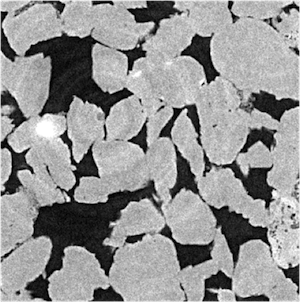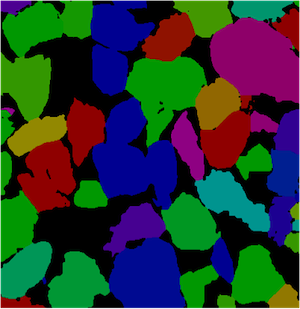| Home |
Short Course | Workshop | Networking Events | Practical Information |
| Apply / Register |
Interpore
Focus Group on Pore Scale Modeling and Visualization
is pleased to
announce
Short Course and Workshop on Image Analysis for Porous Media
July 12-14, 2011 (Shourt Course)
July 14-15, 2011 (Workshop)
Short Course and Workshop on Image Analysis for Porous Media
July 12-14, 2011 (Shourt Course)
July 14-15, 2011 (Workshop)
|
Short
Course on
Image Analysis for Porous Media (July 12-14, 2011) Instructors: Prof. Dorthe Wildenschild (Oregon State University) Prof. Adrian Sheppard (Australian National University) Prof. Maša Prodanović (The University of Texas at Austin) Target Audience: Graduate students and researchers working in porous media characterization and modeling. Location: Student Activity Center, Room 2.120 The University of Texas at Austin, 2200 Speedway Ave, Austin, TX 78712 Detailed program and Google calendar are available. Short Course will be limited to 40 participants to ensure quality of instruction; hence formal application is required. Application Procedure: You can formally apply by submittiing the following form. You will be asked to provide some basic information on your work, educational background, and image analysis related experience. You will receive a confirmation email within a week of your application. Please email us (short.course.utexas@gmail.com) if you haven't heard from us within two weeks of your application. Application Deadline: May 1 Acceptance Notification: May 15 Short Course Fee: $200 The support for student attendance/travel might become available, in which case the fee will be waived. Back to Top |
  Figure: (above) A tomographic slice of an imaged Bentheimer sandstone and (below) the result of the grain extraction algorithm. |
Short Course Program
The short course will be a combination of lectures and hands-on exercises using a combination of ImageJ and Matlab (as necessary). Since both software are easily available, participants will be able to take home useful scripts. The participation is limited to 40 so that instructors can address all personal questions and concerns. You are welcome to bring along an image analysis problem you are working on.
- Imaging modalities (Sessions 1 and 2 / total 3 hours)
- a. Types of imaging techniques (focus on x-ray, overview of NMR, CLSM, SEM, FIB)
- b. Dimensionality and data acquisition (multiple images, presence of multiple fluids)
- c. Image quality: sharpness and contrast
- d. What is an image? Data types, introductory ImageJ hands-on session.
- Typical workflow in image processing for porous systems
- a. Preprocessing and filtering (tomographic images); noise reduction and edge enhancement, masking; (Session 3, 1.5hrs)
- b. Segmentation (identifying features of interest); manual and automatic methods; quality control in segmentation; (Session 4, 1.5hrs; hands on exercises)
- c. Binary image manipulation and morphological methods (Euclidean distance, morphological opening/closing etc.); (Session 5, 1.5hrs; hands on exercises)
- d. Quantification of features (Session 6, 1.5hrs; hands-on exercises)
- e. Surface extraction and overview of available visualization software (Session 7, 1.5hrs; hands on exercises)
- Advanced topics (Sessions 8-10, 4.5 hours total)
- a. Medial axis extraction (skeletonization)
- b. Pore-throat network identification
- c. Region growing and watershed methods for segmentation and feature extraction (“advanced” morphological methods).
- d. Grain-grain separation and network extraction
- e. New and emerging topics (as time permits)
- - biofilms application
- - extraction of a
surface from a point cloud
- - Level set methodology for both segmentation and capillarity controlled flow (use of images in direct flow modeling)
- Visit to microtomography imaging center UTCT
- Demonstration of core flood imaging using medical scanner
Short Course Google Calendar:
Back to Top